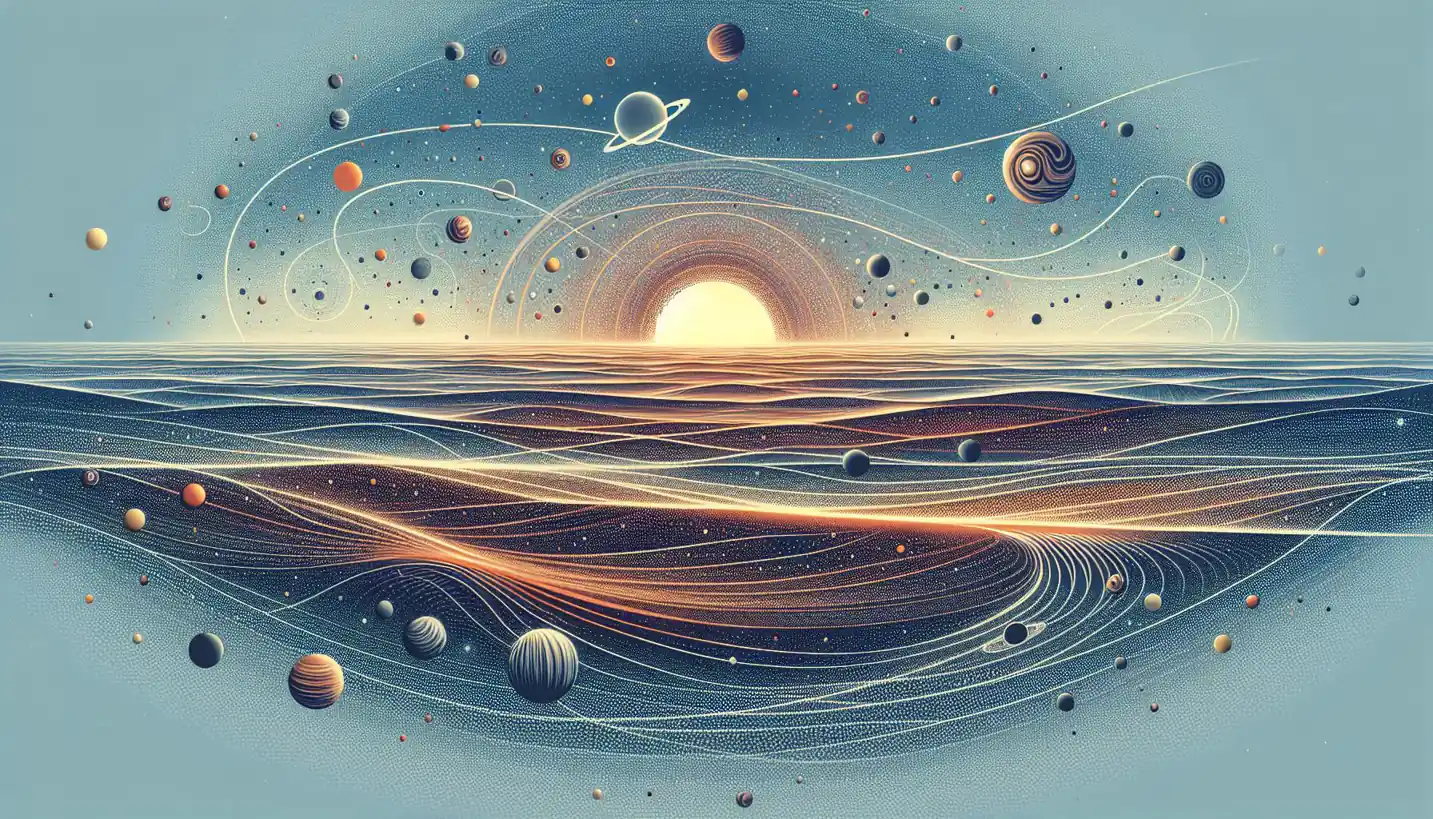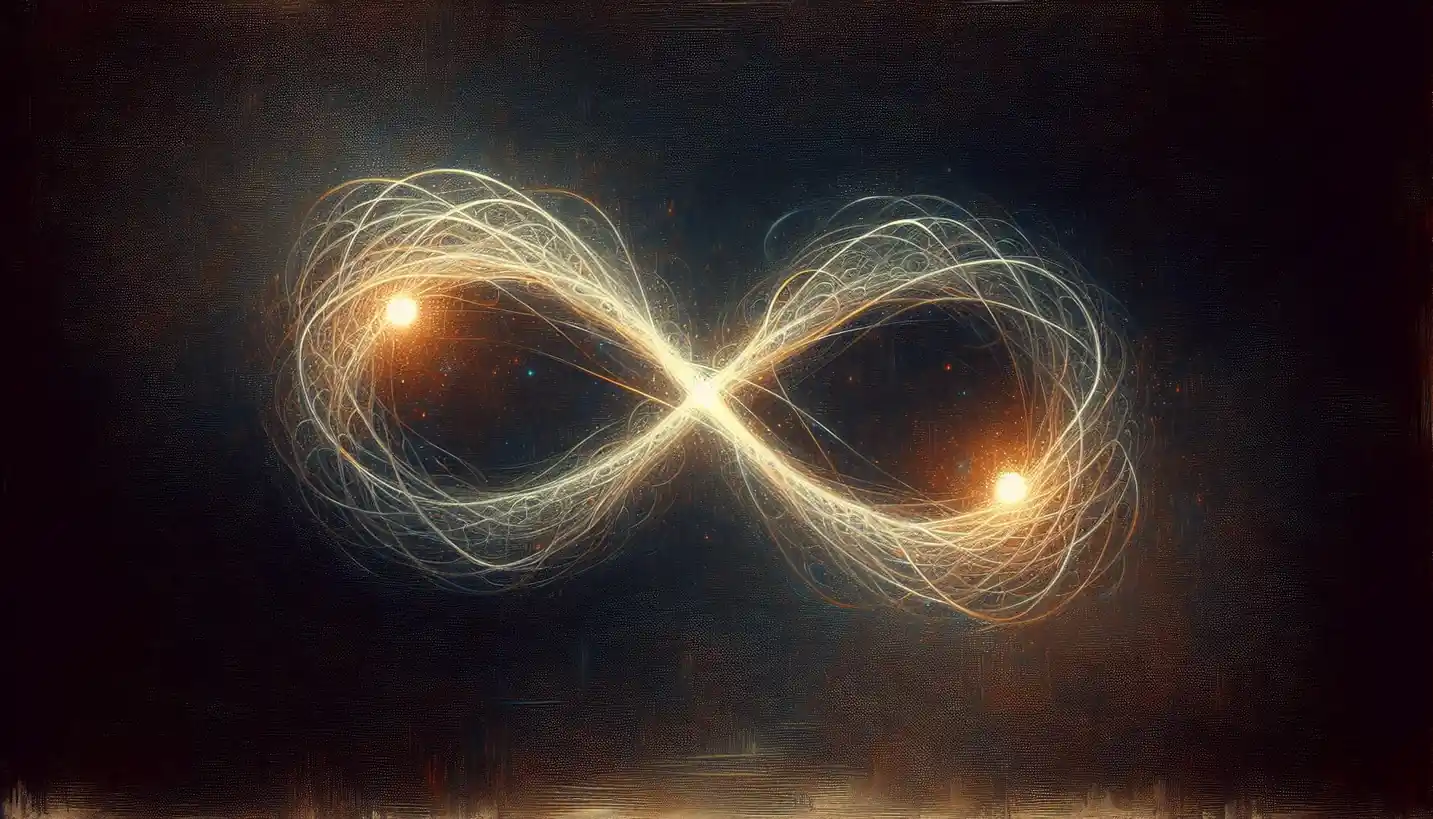· Physics · 4 min read
Dark Matter: Unraveling the Mystery of the Cosmos
Dark matter is the elusive substance holding galaxies together. Explore ongoing mysteries and how scientists hunt for evidence of its existence.

Once, there was a dilemma in the world of astronomy. Scientists were observing galaxies and noticed something peculiar—there wasn’t enough visible matter to account for the gravitational pull holding these galaxies together. This missing mass gave rise to one of the most fascinating mysteries in physics: dark matter.
What is Dark Matter?
Dark matter is like the universe’s invisible cloak. Although we can’t see it directly, it’s believed to make up about 27% of the universe. It doesn’t glow, reflect, or absorb light, which makes it very different from anything we’re used to. Imagine trying to see the wind; you can’t see it, but you know it’s there because it moves things around. In a similar way, we know dark matter exists because of how it interacts gravitationally with other objects in space.
The Evidence for Dark Matter
The idea of dark matter first popped up in the 1930s when astronomer Fritz Zwicky noticed that galaxies in a cluster were moving faster than expected based on the visible matter alone. This led him to propose that some unseen mass was at play.
In the 1970s, Vera Rubin’s work further supported this concept. She observed the rotational speeds of galaxies and found that stars on the outskirts moved just as quickly as those near the center, defying the expected drop-off in speed. This hinted that a lot of invisible matter was surrounding these galaxies.
How Dark Matter Shapes the Universe
Dark matter acts like a cosmic web, holding galaxies and galaxy clusters in place. Imagine a massive invisible scaffolding that supports the structure of the universe. Without it, galaxies would fly apart. It’s like the stitching that holds together a celestial quilt.
One fascinating idea about dark matter is that it might have played a crucial role in the formation of galaxies soon after the Big Bang. The gravitational pull of dark matter would have attracted normal matter, leading to the creation of stars and galaxies. This understanding highlights its fundamental impact on the very structure of the universe.
The Quest to Understand Dark Matter
The hunt for dark matter is like a cosmic detective story. Scientists are using high-tech tools like the Large Hadron Collider (LHC) and observatories perched in space to try to catch a glimpse of it. They’re also setting up experiments deep underground to detect interactions with dark matter particles, using incredibly sensitive detectors.
One popular theory suggests that dark matter could be made up of particles called WIMPs (Weakly Interacting Massive Particles). These particles rarely interact with normal matter, making them elusive. Some other candidates include axions and sterile neutrinos, each with their own unique properties and challenges for detection.
Why Dark Matter Matters
Understanding dark matter isn’t just an academic exercise; it has profound implications for our understanding of the universe. It could unlock answers to questions about the very nature of gravity and the fabric of space-time itself. Think about it: getting a handle on dark matter might lead us to discover new forces of nature or even reshape our understanding of physics!
Moreover, pinning down the nature of dark matter could influence everything from cosmology to particle physics, potentially leading to technological advancements we can’t even imagine yet.
Dark Matter and the Future of Science
The search for dark matter is pushing the boundaries of what’s possible in science. It encourages collaboration on a global scale, uniting physicists, astronomers, and engineers in a quest to uncover the unknown. This pursuit is a testament to human curiosity and ingenuity.
As we continue exploring, new observatories and experiments, such as those based on gravitational waves or advanced space telescopes, might provide crucial insights. The future of dark matter research could lead to a scientific revolution, transforming how we perceive the universe.
Open Questions and Ongoing Mysteries
Even with all this research, dark matter remains a profound mystery. What exactly is it made of? How does it fit into the larger picture of fundamental physics? Could it interact with other forces we have yet to discover?
These questions invite us to look deeper into the universe, pushing the boundaries of human knowledge. As scientists unravel these mysteries, the story of dark matter reminds us that the universe is much richer and more complex than we ever imagined.
In the grand scheme of things, the enigma of dark matter serves as a humbling reminder of the vastness of the unknown, urging us forward in our quest for knowledge. Who knows what exciting discoveries lie just beyond our current understanding?


